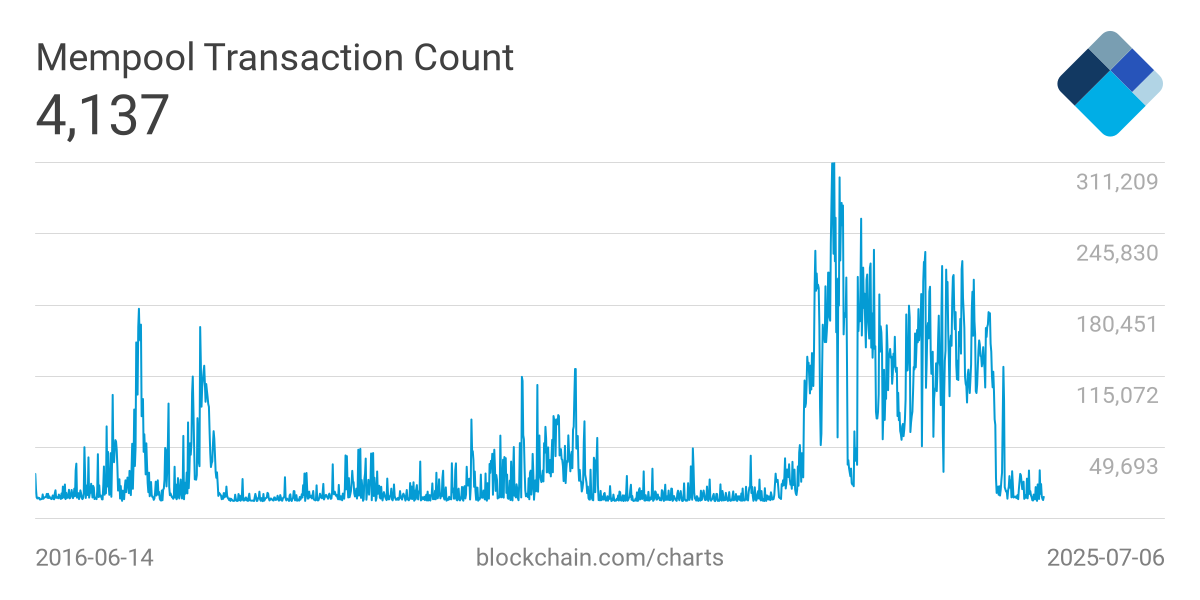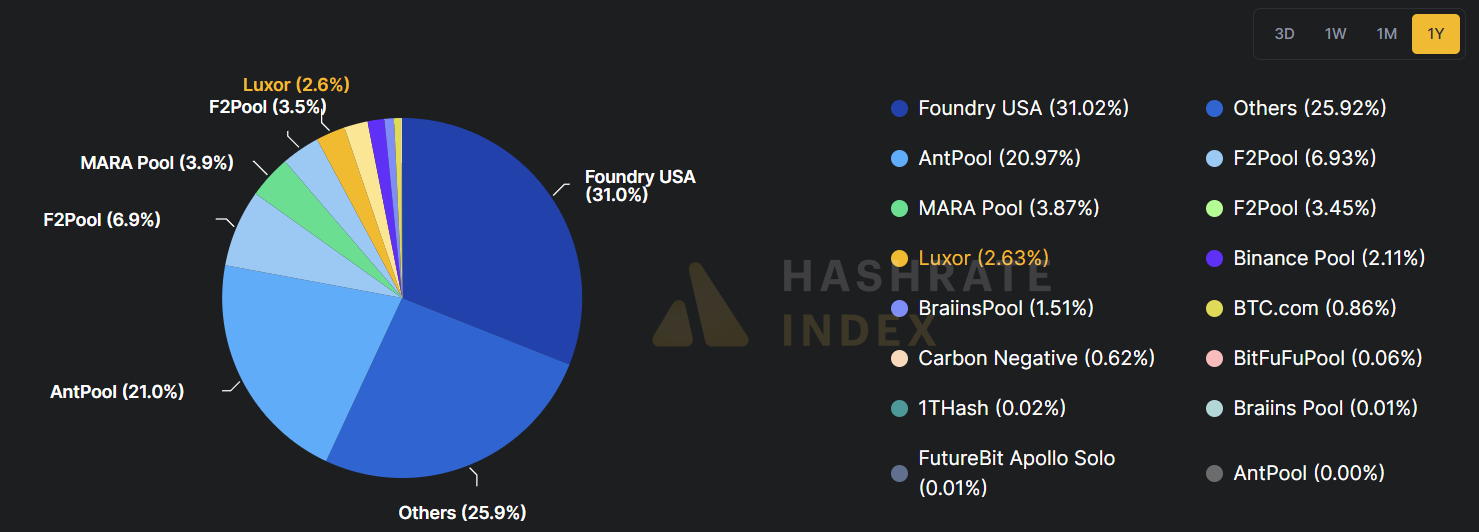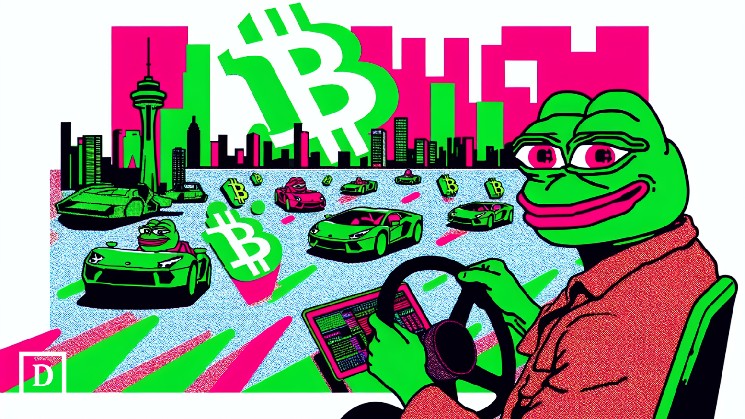Bitcoin's reminiscence exercise has hit an all-time low, miners' charge revenues have fallen, and a few folks within the crypto neighborhood have warned in regards to the long-term sustainability of the world's most respected blockchain.
In keeping with knowledge from BlockChain.com, solely hundreds of unconfirmed transactions stay in Bitcoin's reminiscence as of press time. Payment revenues at the moment account for lower than 0.5% of mining revenue, far beneath the extent seen in earlier bull markets.
“Merely put, nearly all the precise customers of Bitcoin have left, too, on the highest worth ever,” wrote Joel Valenzuela, Sprint's enterprise growth chief, within the X-Publish. “We face a significant disaster. The Bitcoin community has gone bankrupt, and there was an enormous change, and property change into absolutely detained property run by governments and businesses.”

BTC pending transactions
Mempool – a queue of pending Bitcoin transactions – acts as a buffer when transaction demand exceeds block capability. Customers connect charges to encourage miners to incorporate transactions within the subsequent block. So does costs when actions surge. However as soon as Mempool turns into clear, Blockspace competitors disappears, and miners' incomes are additionally from charges.
Miners face a decline in income
When Mempool is empty, the miner is already feeling the squeeze. Ethan Bela, chief working officer of Bitcoin mining infrastructure supplier Luxor Applied sciences, advised Defiant that Bitcoin's long-term safety mannequin will depend on both worth progress or sustainable worth viewing.
“We consider that the continuing funding in infrastructure and hashrate manufacturing is a key part of Bitcoin's safety,” Bella mentioned, including, “It will be significant that Bitcoin costs rise and buying and selling charges rise as block rewards lower…”
“So, low buying and selling charges will not be a supply of concern within the quick time period, however they’re actually vital within the medium to long run, and miners have to encourage extra initiatives to eat block area and commerce in L1,” Vera defined.
Others level to adjustments in patterns in each person habits and protocol use. For instance, as Doggfather, CEO of Doggfather Analytics, as defined within the Defiant commentary, retail traders “are investing in ETFs and related oblique automobiles as a result of they don't exist but or haven’t come in any respect throughout this cycle (comparable to notes exchanged by different legal guidelines).
Community safety is in danger
One other issue behind Mempool's vacancy is the dearth of non-financial buying and selling actions. Doggfather says that ordinal numbers just like the BRC-20 and runes and casting of dependable tokens have induced demand for block area to plummet as they’re now principally dormant.
“The reminiscence was busy and the charges have been excessive when there was “sizzling” ordinances and rune mint. Essentially the most well-known block was after the fourth half at block 840,000. The charge was 37.626 BTC ($2,402,245) for this one block.

BTC Minor Market Share
However issues run deeper than use. “Proper now, miners' charge revenues are a pathetic charge in danger, and so they put safety in danger,” mentioned Nishant Sharma, head of developer ecosystems at Doma Protocol. “What's worse, Mining is centralized, with the highest 5 swimming pools, together with Foundry and Antpool, controlling over 60% of the block.”
Sharma highlighted grassroots mining efforts as a possible option to problem centralization. He describes a brand new mining pool mannequin that doesn't cost taking part miners, provides Lightning Community Payouts, and is designed to permit small-scale telecommuters to compete with the dominant pool.


